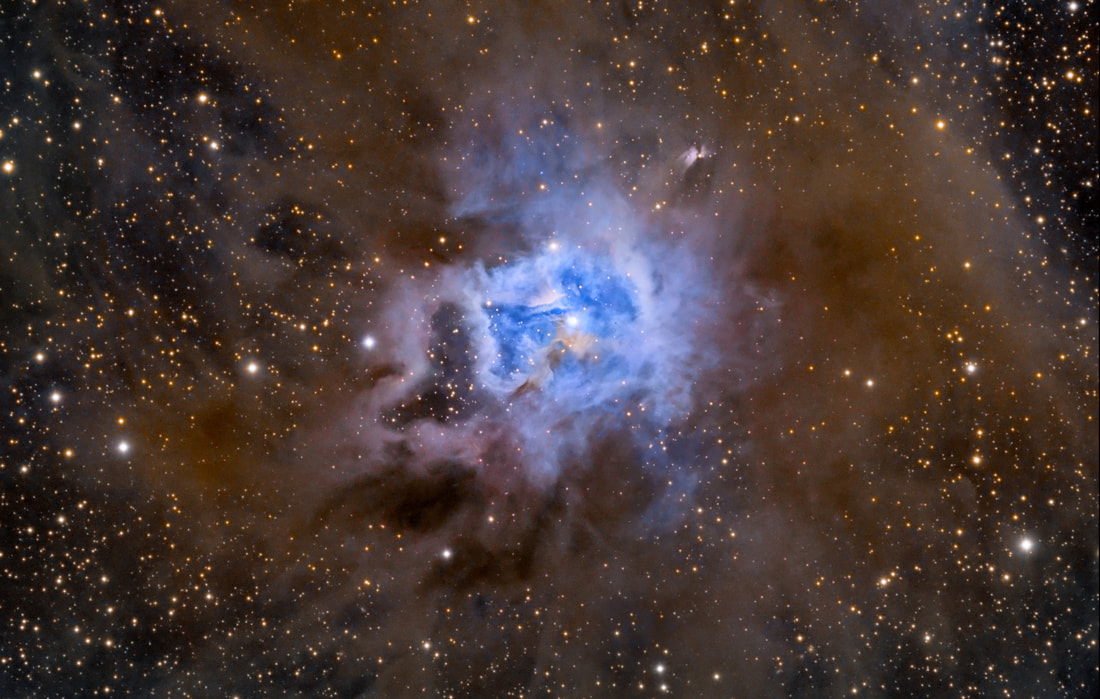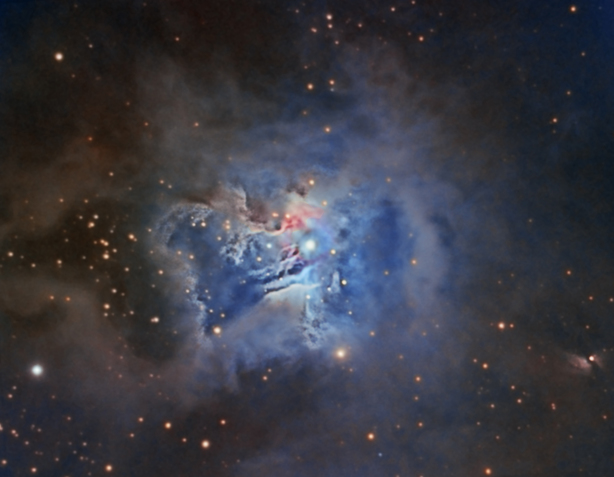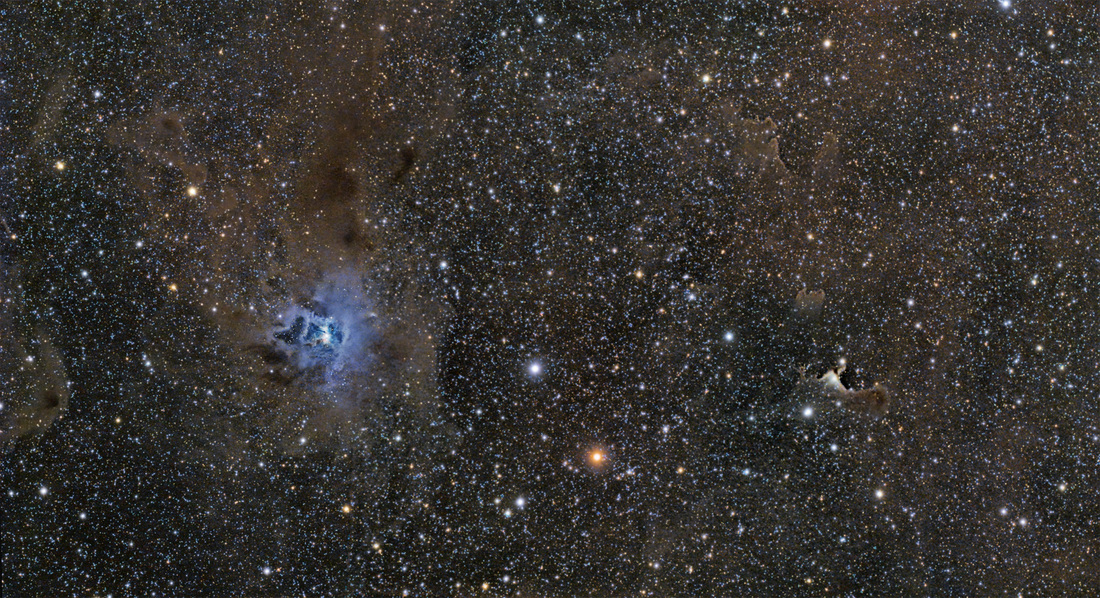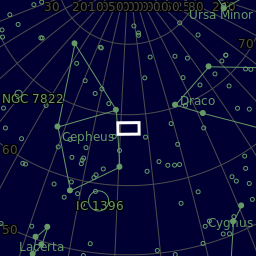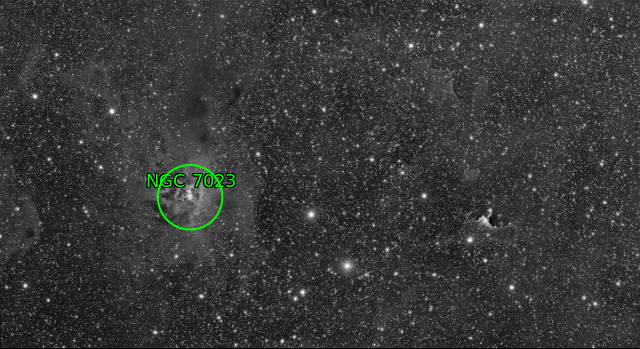NGC7023 - The Iris nebula
This is totally new data on the Iris nebula taken with different equipment than before. I think it is interesting here to be able to look at the Iris nebula at such different focal lengths.
Details:
M: Mesu 200
T: TMB 152/1200 refractor
C: QSI683 ws-g with Baader LRGB filters.
Luminance 150x 600s
R,G and B - 100x300s
Total imaging time 50 hours.
M: Mesu 200
T: TMB 152/1200 refractor
C: QSI683 ws-g with Baader LRGB filters.
Luminance 150x 600s
R,G and B - 100x300s
Total imaging time 50 hours.
|
The Iris Nebula, also NGC 7023 and Caldwell 4, is a bright reflection nebula in the constellation of Cepheus. It lies 1,300 light-years away and is six light-years across.
Details M: Avalon Linear Fast reverse T: Celestron C9.25 C: QSI690 WSG with Baader filters SXAO 92x300s Lum 2x2 58x300s lum 1x1 50x60s Lum 64x100s Blue 78x100s Red Total of 17:16:40s |
NGC7023 widefield
|
On the right hand of this image is VdB 141 (The ghost nebula) so called because of it's shape.
Details: M: Avalon Linear fast reverse T: Takahashi FSQ 85 C: QSI690ws-g with Lum filter and Starlight Express Trius SX25C OSC for the colour. Luminance - 2 pane mosaic 54x600s in total Colour - 100x600s Totalling 25 hours and 40 minutes |
